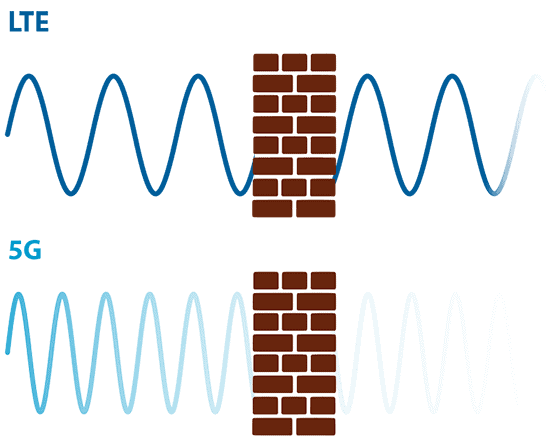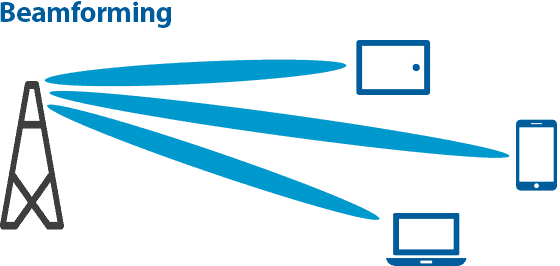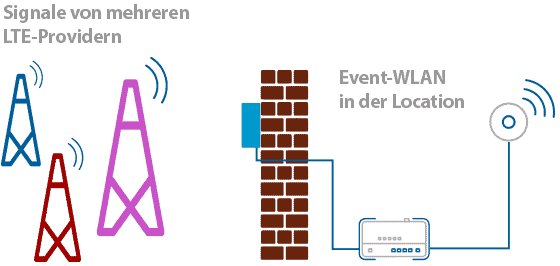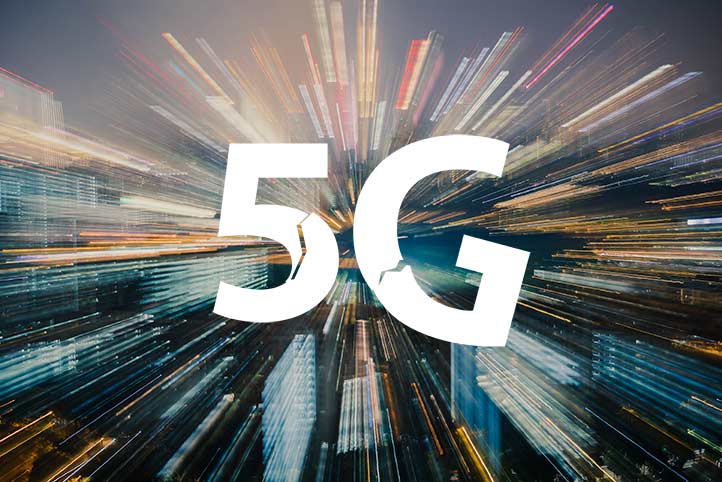Will 5G bring a revolution or is it just hype?
When you read about 5G in the media or hear politicians talking about it, it seems as if they have found the miracle weapon against all the problems of mobile data requirements. Now the appropriate antennas are being built - and we'll be surfing at high speed everywhere and at all times. However, such dreams are often too good to be true. And so it is with 5G.
Everything sounds wonderful in the marketing - there is often talk of data rates of over 10 Gbit/s. But even 5G is ultimately just a wireless standard that works on certain frequencies. And like all other wireless technologies, it is also bound by physical limits and typical problems.
History and development
LTE (Long Term Evolution) is an important milestone on the way to reliable and powerful network and WiFi. The development of LTE officially began in November 2004 with the aim of developing a mobile communications technology that enables higher data transmission rates and lower latency times than previous standards such as GSM and UMTS. These goals were successfully achieved through the use of innovative technologies.
The technical specifications for LTE were finalized in December 2008 and the first LTE networks went live in Oslo and Stockholm on December 14, 2009.
Range vs. speed
The advantage of 5G is that the higher frequency of the signal (over 6 GHz) also enables higher speeds and lower latency. 5G technology is a further development of the LTE mobile communications standard and plays a decisive role in future mobile communications technology, as it is already implemented in existing LTE networks. However, this also encounters an old problem in the wireless transmission of information: The range decreases the higher the frequency. In addition, the so-called attenuation (e.g. when the signal passes through walls) is much more dramatic at high frequencies.

More range with beamforming
With previous standards, transmission masts simply radiate the signal in all directions. If you are within the transmission range of a mast, you can establish a connection. With this method, the range of 5G would be limited to approx. 500 m. You can imagine how many masts would have to be erected for full coverage. Instead, the decision was made to use a method that is not actually new: a directional signal.
So instead of simply radiating the entire energy of the antenna in all directions, the energy is bundled and directed towards the receiver in a transmission cone. You can think of it a bit like the beam of a flashlight. It is very bright at one point, but it remains dark around it. The special thing about 5G beamforming, however, is that this transmission cone is mobile and "tracks" the objects - after all, we are talking about mobile communications with mobile devices here.
5G networks offer many advantages, but are not automatically faster than LTE. Current 5G networks are often only available in areas that are already equipped with LTE, which means that the differences in speed can be minimal in many regions.
This makes it possible to achieve a range with 5G that enables practical use at all. However, even with this, the problem remains that the 5G signal has difficulty penetrating obstacles. In practice, this means that there may be no reception indoors, while you can still get a connection right outside the door.

Network slicing: virtual networks for better QoS
In addition to beamforming, there are other approaches to achieve a greater range and higher transmission speeds. Network slicing can be used to differentiate traffic, e.g. depending on the data type. This makes it possible to segment certain users, devices or applications into specific groups and assign them to virtual networks with a specific QoS configuration.
Put simply, there are different virtual networks for specific requirements. Devices with similar requirements then come together in the optimized virtual network. In addition, technologies such as MIMO (Multi Input Multi Output) are also used, which use several antennas to transmit the signal.
You can't outsmart physics
Overall, it can be said that attempts are being made to mitigate the problems caused by physical limitations. This works to a certain extent. However, the basic problem remains: If the density of mobile network transmitters does not increase dramatically, 5G will not be able to exploit its advantages - and this is, in addition to the already expensive radio licenses, another significant cost factor for mobile network providers. The LTE network plays an important role here, as it continues to exist in parallel with 5G and ensures a nationwide mobile data connection. The technology is therefore predestined above all for manageable areas such as industrial production sites, soccer stadiums or certain areas in large cities. Initial tests in the wild have so far been rather sobering, as the 4G network was only minimally outperformed. The higher speed is nice, but a far cry from the hoped-for revolution.
Frequencies and transmission masts
LTE uses different frequencies to transmit data. In Germany, for example, the frequencies 800 MHz, 1800 MHz, 2100 MHz and 2600 MHz are used.
This variety of frequencies enables flexible and extensive coverage of the LTE network. The transmission masts for LTE are generally higher than those for GSM and UMTS to ensure better coverage. The height of the masts can vary depending on the location, but is usually between 30 and 40 meters.
What are the benefits of 5G and when is WiFi suitable?
At events in particular, the question always arises: How can I ensure a reliable data infrastructure? Will it perhaps soon be possible to simply take this for granted because there is comprehensive coverage with an always available and fast data signal? Unfortunately, theory and practice differ enormously here. Theoretically, nationwide 5G coverage is of course conceivable - after all, it "only" requires a sufficient number of nodes. In practice, however, this is not economically feasible. After all, the monthly fees for a mobile phone contract also need to remain at a realistic level. The advantages of 5G will have to be largely dispensed with, especially in enclosed spaces.
WiFi is also evolving
But there is also good news: WiFi has not stood still either and is making a huge leap forward with the new "WiFi 7" (the standard is officially called "IEEE-802.11be").
LTE and 5G play a crucial role in mobile network technology. LTE acts as a transitional technology during the rollout of 5G, and both technologies coexist to ensure seamless connectivity.
MIMO technology in particular has improved. Thanks to multiple antennas, data can be sent and received in parallel. With the new MU-MIMO, this works equally with the uplink and downlink. Normally, wireless devices have to wait until the respective node has time if it is still busy transmitting to other devices. By optimizing parallel connections, performance now increases noticeably - simply due to the lower latencies.
With the new WiFi 7 standard, bandwidths of up to 11 Gbit/s are possible. This is particularly interesting for events, as many users need to be supplied at the same time. Another advantage of the local WiFi is that you can directly influence the WiFi, in contrast to mobile coverage. If the performance is not satisfactory, it is easy to make improvements.
WiFi is plannable
In addition, users receive the same WiFi performance regardless of their mobile tariff model. In the mobile sector, on the other hand, it is possible for guests with certain tariffs to have a good connection, while guests using other tariffs or a different provider are significantly less well connected. And while almost all devices have a WiFi, many device classes such as tablets or notebooks often do not even have a SIM card slot.
Depending on which digital services are to be used at the event in question, the local WiFi can also be adapted. Are many users to be served in a confined space? Are particularly high bandwidths required at certain points (e.g. for video streams)? Or do you need to cover a particularly large area? Thanks to the flexibility of local WiFi , almost all scenarios can be mapped with the reliability required for events.
Conclusion
So what are the benefits of 5G?
5G enables faster, more stable data connections - especially where there are no cables. This is a real advantage in the event sector: high bandwidths, regardless of location. For guests and digital services, all that matters is that everything runs reliably - whether via 4G or 5G.
At home, 5G is of little use for the time being. Most households can easily get by with 4G. Things get really exciting when 5G is cleverly combined with WiFi - for example using an industrial router that bundles several mobile connections. That way, the fast network arrives exactly where it is needed.

Especially at events, where there is usually only one chance for success, it is advisable to rely on technologies that can be set up according to your own needs. The mobile network, especially with 5G, offers an excellent addition here to be able to use higher bandwidths. However, 5G is not - and probably never will be - the new all-round carefree network that it is often touted as in a number of marketing campaigns.



